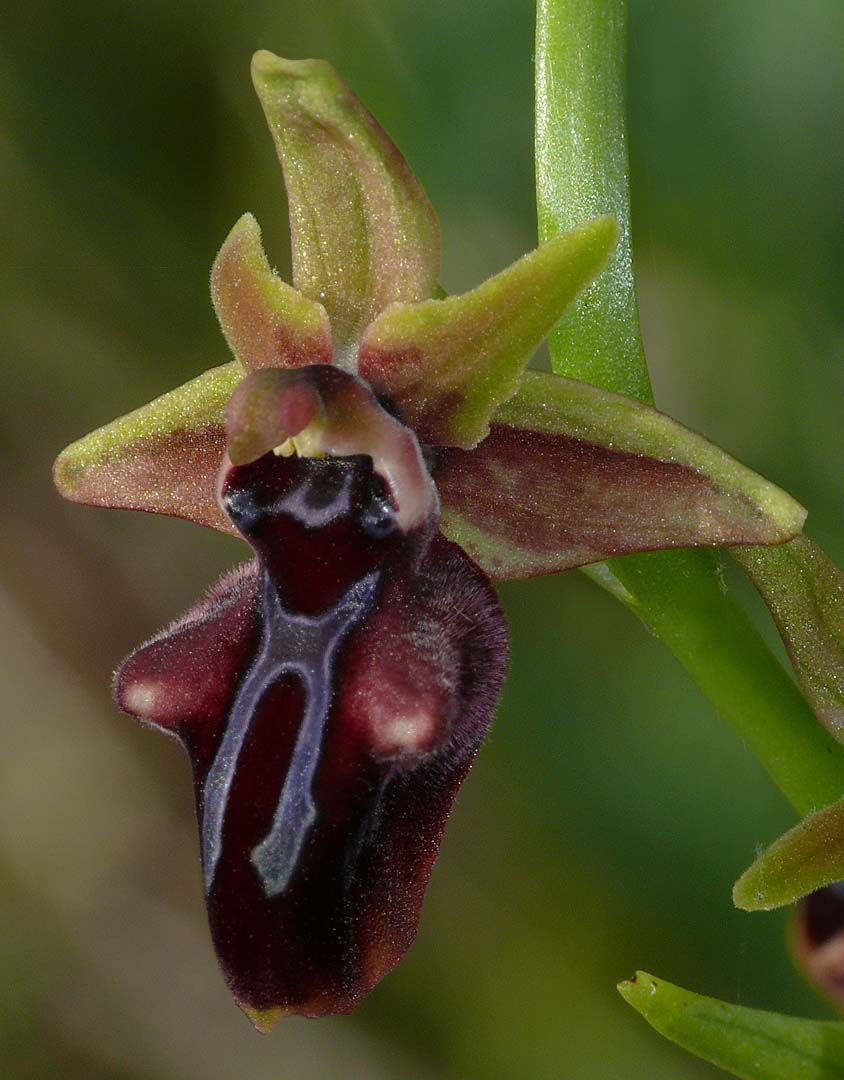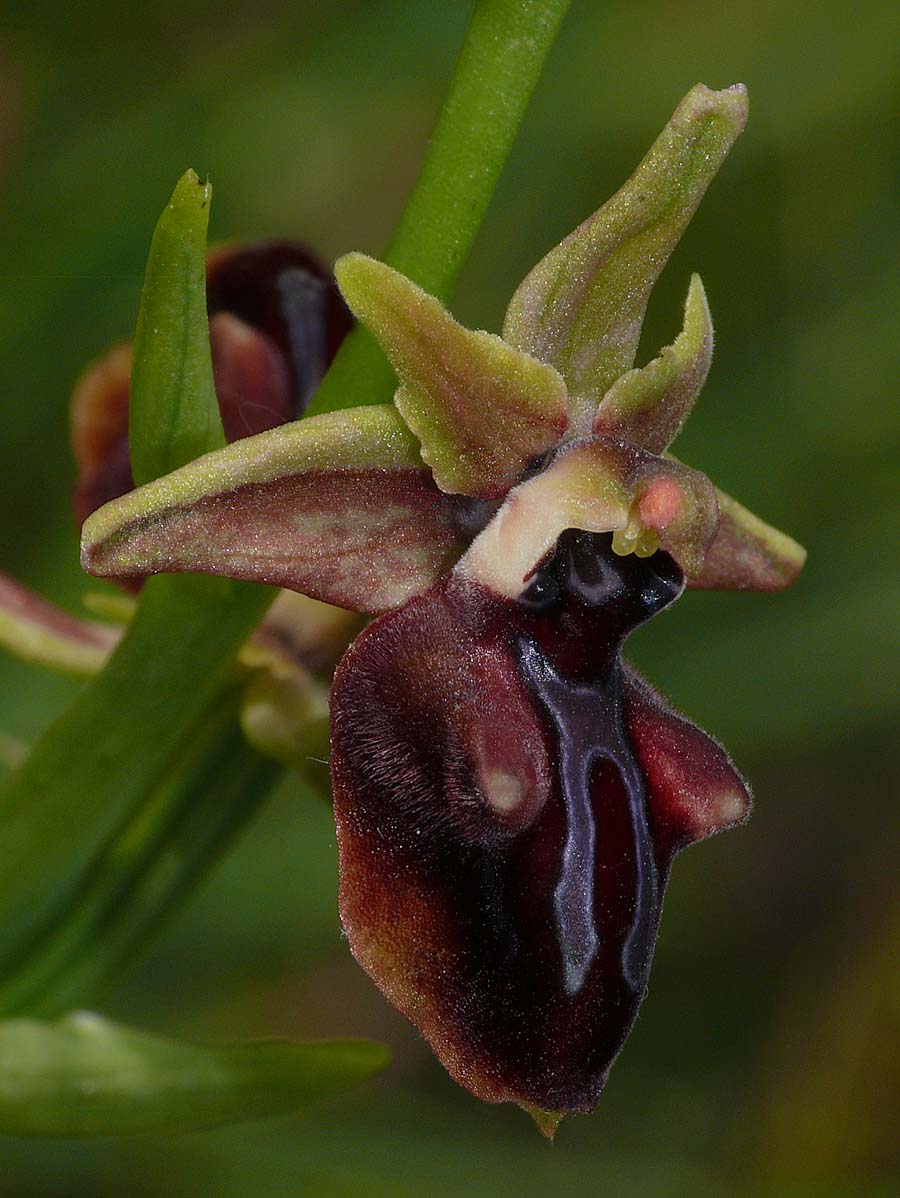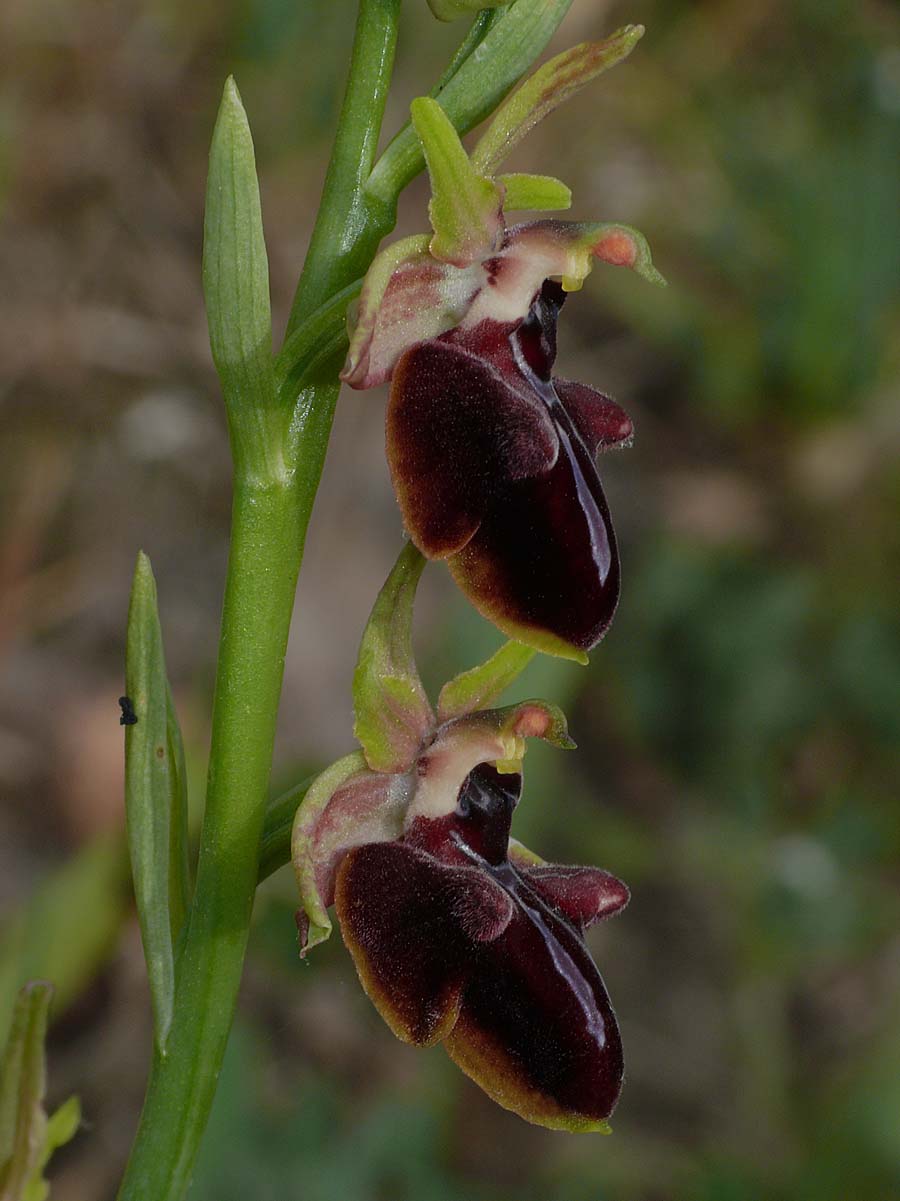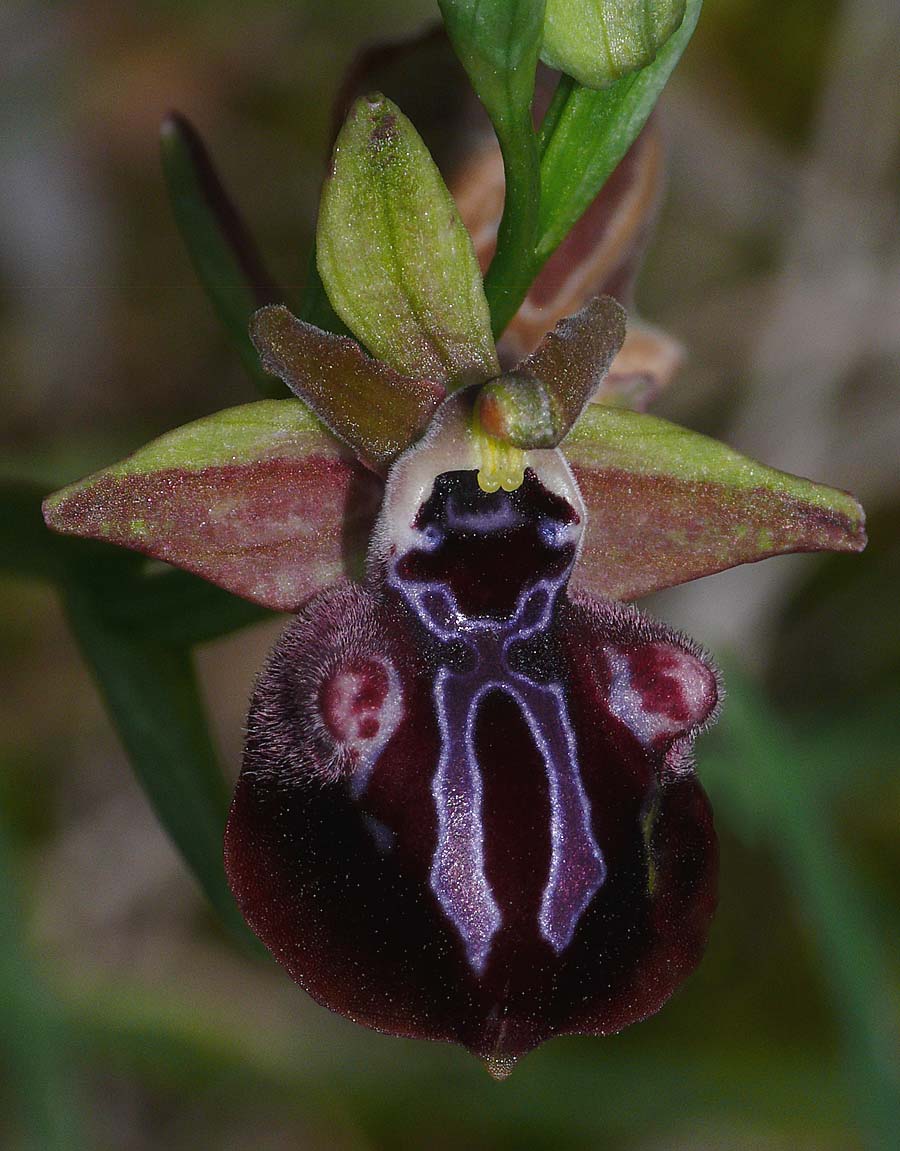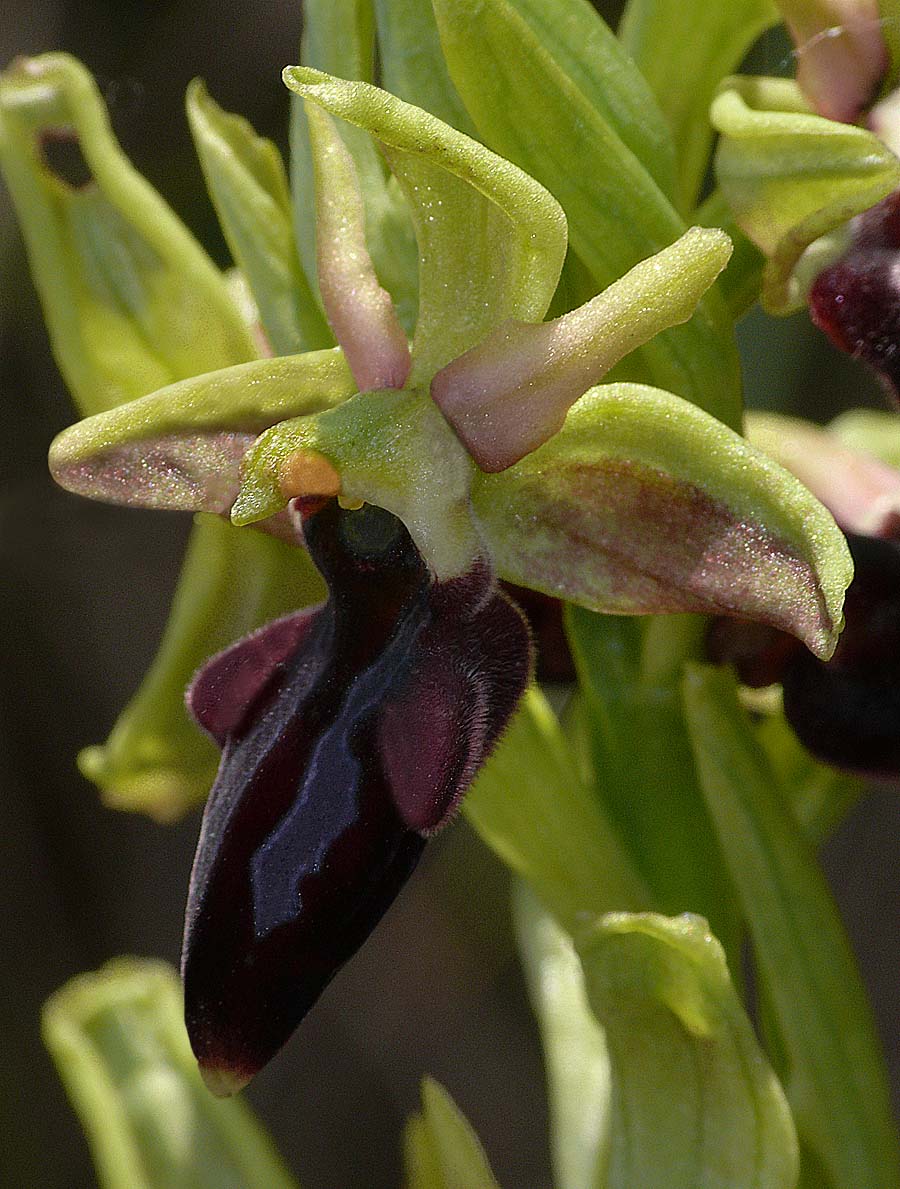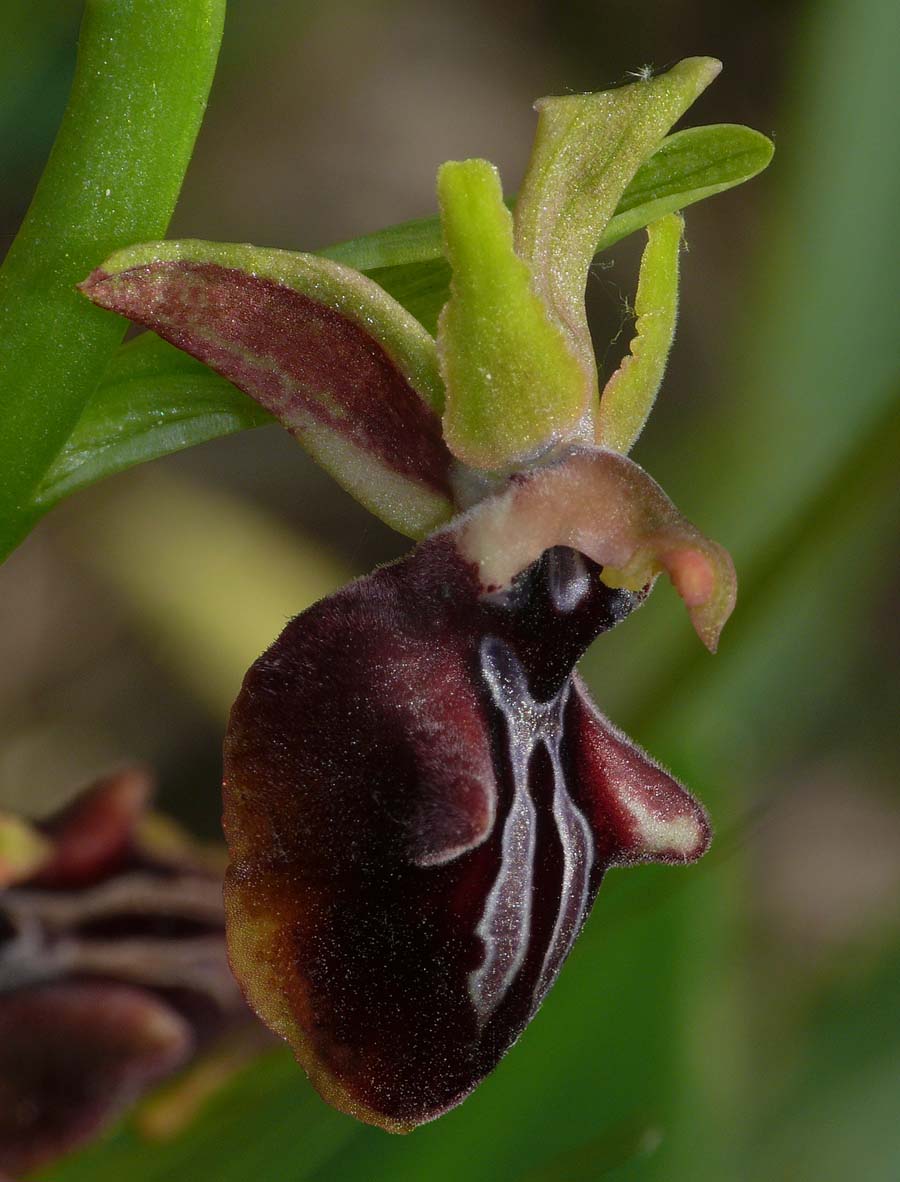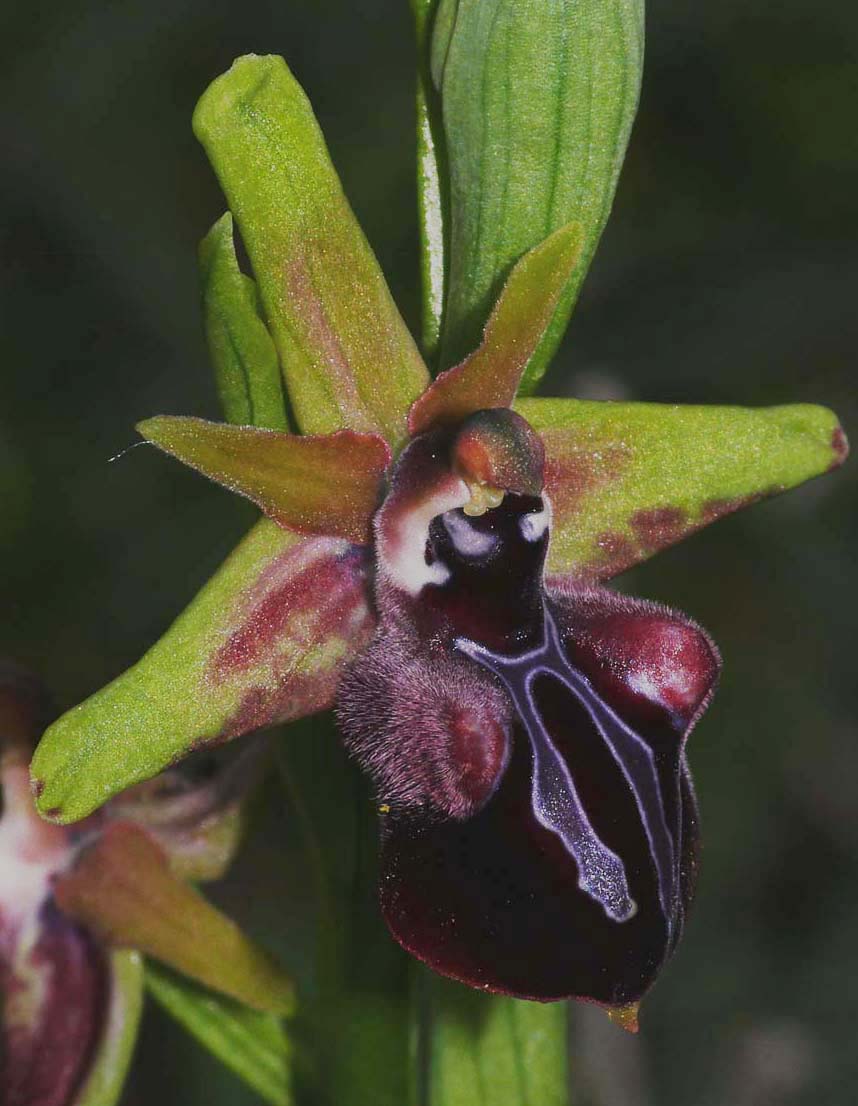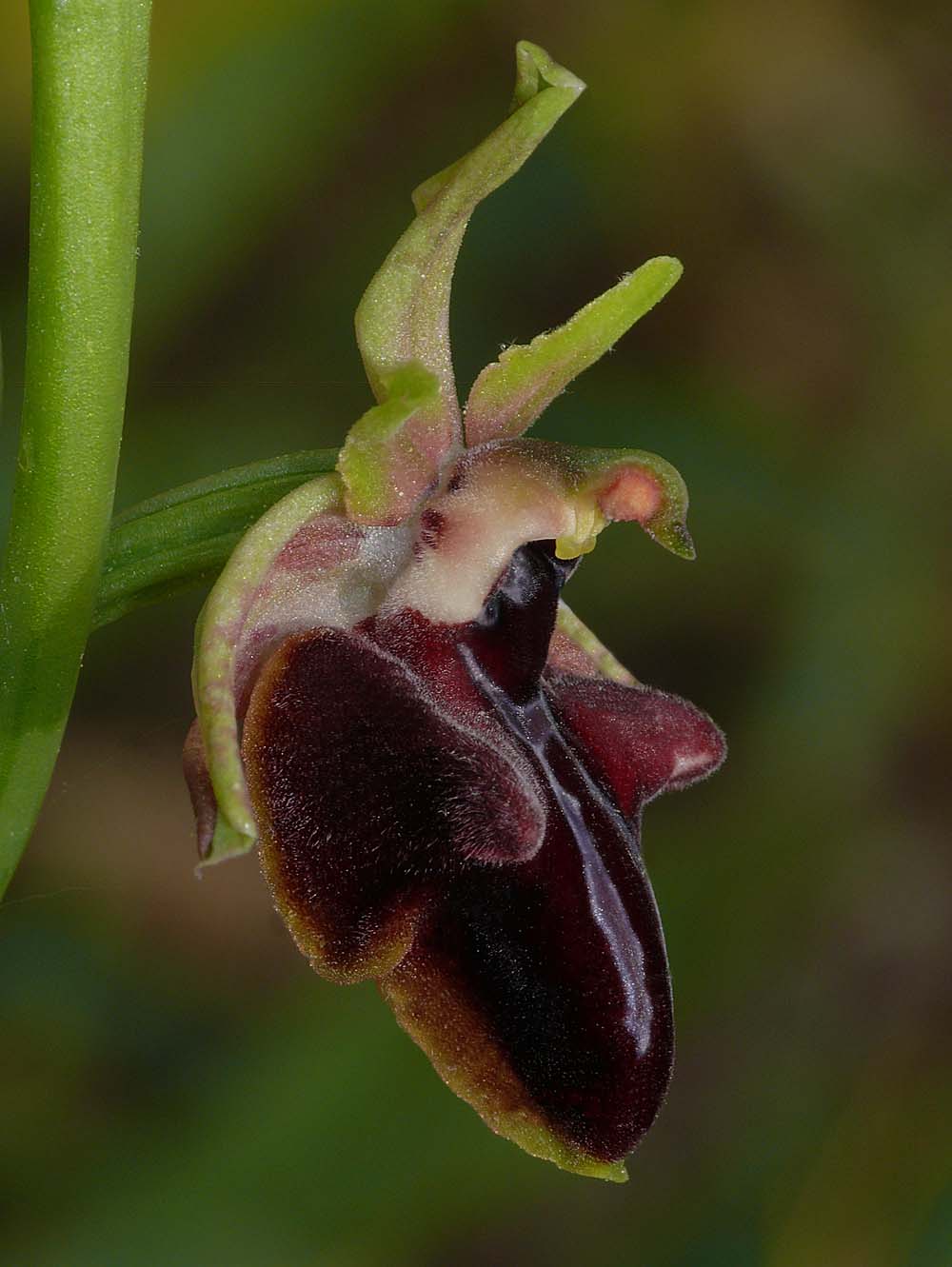O. hystera
was first described from Imathia (Greece) by Kreutz
and Peter in 1985 and is a member of the
widespread and increasingly confusing O. mammosa group
of Ophrys.
This species is very similar to O. mammosa but although sharing many similar characteristics, in hystera they seem to be present in an exaggerated form. This is particularly the case in three key areas, the first being the size of the plant, which significantly exceeds that of O. mammosa in all its parts. O. hystera is a robust, often tall plant which can carry up to ten large flowers in a loose inflorescence. The colouration of these flowers can be significant, with O. hystera normally being far less drab and often brightly marked with a prominent yellow/orange marginal band.
A second and important aid to identification is the size of the basal swellings, which in O. hystera are always substantial but often huge and completely dominating the lips appearance. The final morphologically differentiating feature of the species is the stigmatic cavity which is always dark, with a pair of bluish/white pseudo-eyes and a distinctive white and grey central spot (specular stage) between them. The O. mammosa group of Ophrys is very well represented in the northern half of Greece, where hybridization is widespread and intermediate populations common. O. hystera is as subject to these ingressions as its cousins and identifications can be difficult. O. leucophthalma is another species that can easily be confused with O. hystera, particularly as they are both late flowerers and share similar habitat preferences. The former species may be separated by its white specular stage and thicker white lining to the speculum.
The illustrations are from the Peloponnese and northern Greece, dating from the second week of May.
This species is very similar to O. mammosa but although sharing many similar characteristics, in hystera they seem to be present in an exaggerated form. This is particularly the case in three key areas, the first being the size of the plant, which significantly exceeds that of O. mammosa in all its parts. O. hystera is a robust, often tall plant which can carry up to ten large flowers in a loose inflorescence. The colouration of these flowers can be significant, with O. hystera normally being far less drab and often brightly marked with a prominent yellow/orange marginal band.
A second and important aid to identification is the size of the basal swellings, which in O. hystera are always substantial but often huge and completely dominating the lips appearance. The final morphologically differentiating feature of the species is the stigmatic cavity which is always dark, with a pair of bluish/white pseudo-eyes and a distinctive white and grey central spot (specular stage) between them. The O. mammosa group of Ophrys is very well represented in the northern half of Greece, where hybridization is widespread and intermediate populations common. O. hystera is as subject to these ingressions as its cousins and identifications can be difficult. O. leucophthalma is another species that can easily be confused with O. hystera, particularly as they are both late flowerers and share similar habitat preferences. The former species may be separated by its white specular stage and thicker white lining to the speculum.
The illustrations are from the Peloponnese and northern Greece, dating from the second week of May.
